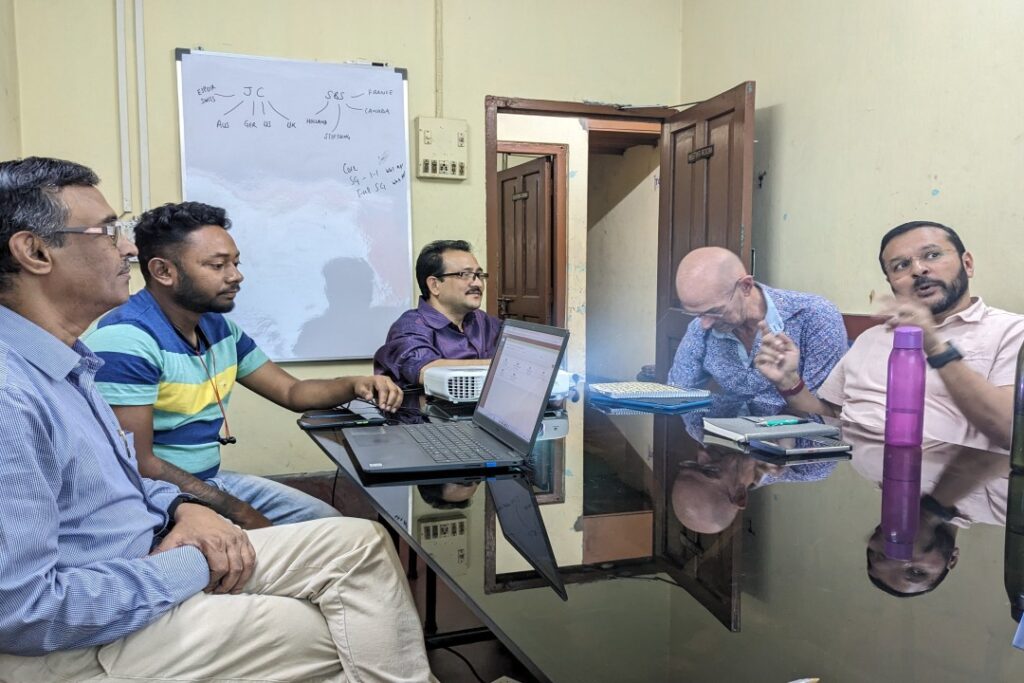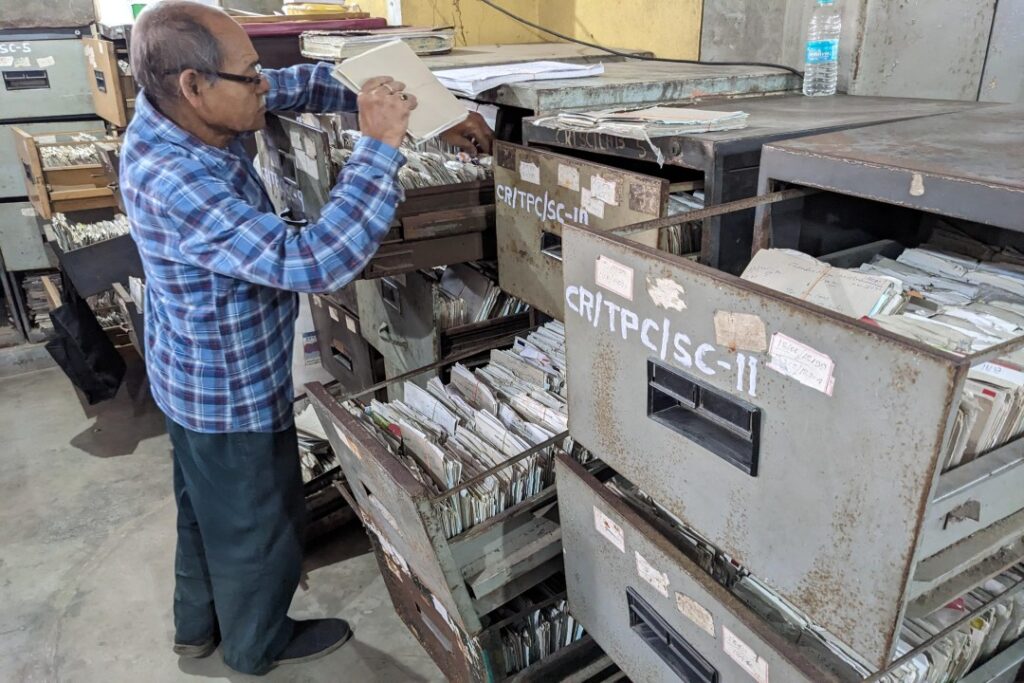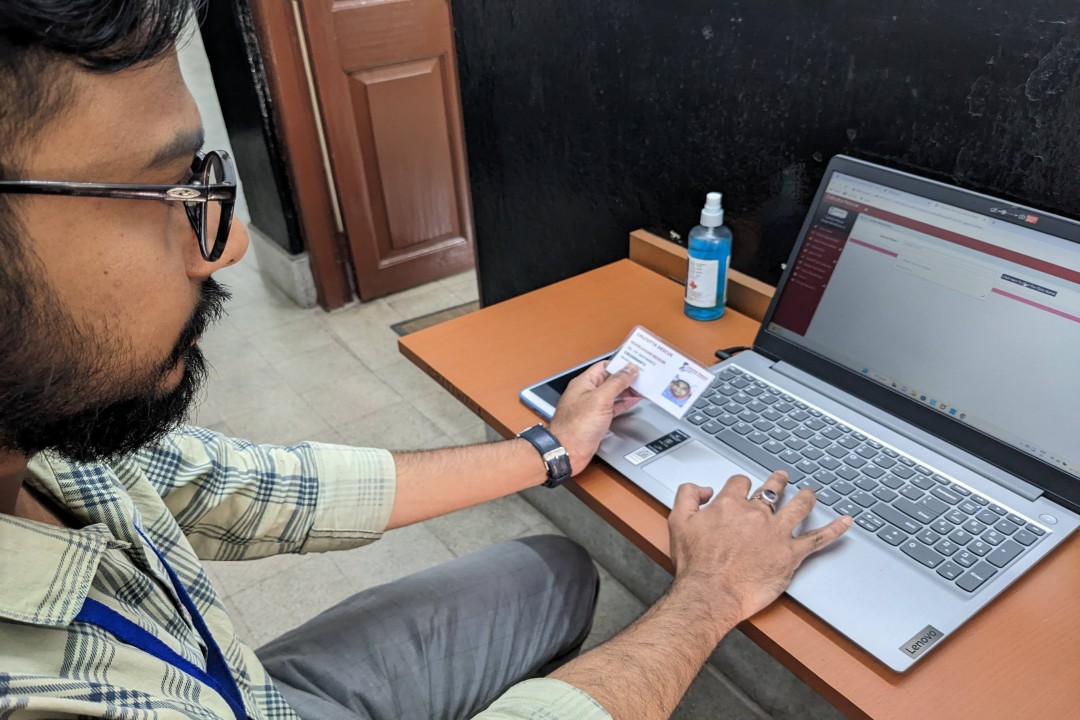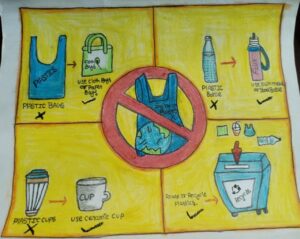
By Sean Duggan
When Jaydeep invited me to sit in on a meeting yesterday morning with software designers building CR’s new management programme, my heart didn’t exactly thump with excitement.
The fiddly details of exactly how, and what, data we capture about patients, medical treatment, sanitation projects and students exam results is not really my specialist subject (not that I have one!).
But I knew that CR is relying on this purpose-built computer system, its first, to radically improve decision making. It should, for the first time, give managers access to all the key data across the organisation in real time. Hard to believe I know, but CR is finally about to access the full benefits of the digital age.
Its operations are extremely complex, spanning so many different sites, teams and activities, and having this information available at the touch of a button will be nothing short of revolutionary.
Up to now some of it has been recorded on a slew of excel spreadsheets produced by various managers every few months, but so much of what is now being inputted on tablets and laptops around the organisation, has never been captured before.
Already it is tracking live the numbers of patients attending clinics, how many appointments are booked, how many people are missing appointments and so much more.
Sitting in the meeting room at the head office we were able to see who was waiting to be seen that morning at Dr Bobby’s clinic in Tangra, their scheduled appointment times and could then drill down into their patient records which contain everything from previous medical conditions to where they live.

The point of the meeting, one of an ongoing series, was to ensure that the programme gives the team precisely what it needs.
A huge amount of thought and discussion has already gone into defining the requirements and building this system.
Called the Benefit Management System or BMS, its development is being entirely funded by The Grow Fund, an Indian foundation that is helping CR develop its skills and capacity. The programme has already been checked and refined and now is being tweaked further to remove glitches and ensure it is as user friendly as possible.
Allowing management to understand what is going on across CR will be a quantum leap forward, but the actual goal is to use this data to make decisions which will make its work much more effective, so it can better serve the needs of all those it helps.
Here is an example. Jaydeep told the meeting that recording the amount of time patients are spending at the clinics is very important.
Recently the HIV clinic has reviewed its operating procedures to cut down the amount of time patients have to wait – and they are very happy.
Time spent with us is time they can’t spend earning their evening meal.
By looking at average times by clinic and treatment type we can see where the bottlenecks are and work to remove them.
Ensuring staff input data accurately and consistently is vital. As they say, garbage in, garbage out.

For example, it is very important to know where patients live. But as Jaydeep pointed out on the screen, the area Khidipore was being spelt in at least three different ways by staff.
This means that when you search that place name you would see only some of those who actually live there. The solution agreed at the meeting was to ensure the place’s PIN code is also logged – an area location system used by Google, which the system can recognise.
What is so heartening is to see Ashish, the lead designer, nod his head at the points raised and confirm he fully understands and will action them.
There is no doubt that it is a massive task to get all the relevant data transferred from thousands of patient record cards, some dating back decades, which are stored in rows of rusty filing cabinets in Tala Park.

But as you read this the work is ongoing and will be for months to come.
I have already seen Dr Bobby’s Clinic in Tangra which is entirely paperless as all information about patients, medicines, nutrition etc is logged directly onto the system.
Jaydeep referred to the software team as partners, and you get a real sense that this is not just a buzzword, but that both sides really look at the relationship in that way.
No doubt there will be teething problems ahead – there always are. But what I saw today fills me with confidence.
I also know the calibre of those involved in monitoring the implementation, including Edward, a highly-skilled UK volunteer out here for another five months, and Dutch volunteer Henk who has worked in software companies, and has spent time on the ground in the past few days with staff using the new system.
I have no doubt that he will be logging onto the app when he gets back to Holland in a few days, and continuing to provide expert advice and support.
Thinking about the implications of all this, software design now seems a lot less boring, and I am genuinely excited to see what benefits this new system will bring over the coming years.



